Mike’s System:
Analog–Wave Kinetics NVS tt, Durand Telos + Sapphire Telos tonearms, Clearaudio Goldfinger Statement, Ortofon MC Anna cartridges, Studer A-820 (2, 1/4″ & 1/2″),Digital–Lampizator SE Golden Gate dac, CAPSv4 hot-rodded server, 24 tb NAS Preamp–darTZeel NHB-18NS w/2 phonos, King-Cello tape repro, Amplifers–darTZeel NHB-458 mono blocks Speakers–Evolution Acoustics MM7
Accessories:Equi=tech 10WQ, (10) Abso Fid PC & (2) Evo Acou PC. *Evo Acou 12′ TRSC and 8m + 1.25m ‘zeel’ ic’s, Tara Labs GME w/HRX 2m RCA’s. *Tripoint Troy Sig, Entreq Silver Tellus + Poseidon, Herzan TS-140 & TS-150, Wave Kinetics A10 U8’s + 2NS, Adona GTX.
After listening to the Apogee Full Ranges in San Diego, I got off at Seattle. Marty had twice told me over the period of last year that this should be my next visit, there is a lot that even he learned from Mike’s system. I would also stop by at Puget Studios (Bruce B) and Jazdoc’s place.
The first thing that strikes you when you enter Mike’s room is, well, the room. Designed almost 12 years ago by Charlie Heston, recording engineer on Led Zep II, and who was part of Rives Audio, it has been worked on by Mike since. When I say that, think about it for a minute…or let me put it another way – Mike has been in that room for 5 hours a day for the last 12 years working on a room already designed by the recording engineer of Led Zep II. Capiche?
There is not a single spec of dust in that room. On the barn, detached from the house, and powered by equitech and dead quiet.
Before I move on, just a caveat – Mike and his friends were very open that the room has moved through troughs and peaks over the last few years. Mike reckons that when Steve visited him 2 years ago, the system was 50% of what it is now, and when Marty visited him 6 months ago, it was roughly 70% of what it is now. So, depending on when you visited Mike, you may or may not relate to my experiences.
We started off listening to the Lampi. I had brought along the special Lampi 45 valves, which we both found to be better than the Elrog 300bs though only a brief 5 minute play. I sold my own Elrogs ASAP when I first compared them.
Clearaudio Goldfinger Statement vs the Ortofon Anna
I listened to some digital and, having got a whiff of the system, I started playing my demo LPs. On Mike’s Wave Kinetics NVS, you can easily alternate the Clearaudio Goldfinger Statement (GFS) on the Durand Kairos Sapphire arm with the Ortofon Anna on the Durand Telos (the lower model, though still higher than the Talea). The Darteel pre/phono is linked by the Zeel interconnect to the 160k Dart amps. I won’t go through his cable and grounding details which you can find elsewhere on the forum.
We first played the Bruch Scottish fantasia with the GFS, followed by the Anna. On this, I preferred the Anna it had a bit more real edge and timbre of the violin.
Then we played Winterreise. The vocals were much deeper behind the speakers on the GFS, but the timbre of piano, the nuance, was better on the Anna.
I consistently preferred the piano on the Anna. We followed this up with Rubinstein’s Beethoven Emperor RCA, where the nuances of the piano were easily audible on the Anna. Then we moved to Richter Liszt Piano Concerto (Phillips), which has a high bass piano, and that had more clarity on the Anna. Had the same conclusion when we compared on the Mozart Piano Sonatas the next day
Bear in mind that the GFS has had only 70 hours on it so far, and would need a few more hours to develop more bass and timbre. The Anna, on the other hand, was on a lower model arm.
We followed this up with Scheherazade – now something had changed. On the second movement (which interestingly enough happens to be a reference for Mike too), the GFS was better. For those familiar with the second movement, it moves through each instrument – strings, bassoon, wind instruments, before going to the trombones and dynamics. The GFS now was giving more shape to each instrument, and I could hear more detail, and nuance of each note. However, on the fourth movement, both sounded equally good.
Mike then took out his 45 rpm. He has 1500 45s, almost all the ones ever made, but he liked the quality of my 33 recording, and thought that if there is one record where a 33 could beat a 45, it would be this one. No way! The upgrade I heard on the 45 was astounding! People talk about upgrading the digital? Just get 45s. I was just hearing so much into every note. Now with the GFS you could hear much better the whoosh into the flute, and you could see bigger and more realistic images. The details and separation were incredible, you could hear each note and instrument decaying separately, musically.
We then played Argenta Espana. I expected the Anna to be better on this, because at Steve’s the Zyx Uni Premium was better on all my demo LPs as compared to the Anna except on this one. However, here the GFS was better.
Then we started playing more 45s as he has a whole wall of them.
On the Cello in the above recording the difference between the GFS and the Anna increased. Counterintuitive to Anna sounding better on the violin and the piano, the GFS was now the one sounding more nuanced. What the GFS was also doing, was that due to a lower noise floor, I was hearing a much wider band – try visualizing cello notes climbing up steps, and climbing down steps. The staircase with the GFS was sounding more extended at both ends, with more steps. Mike’s system was making this so visual.
The Gounod Faust Ballet of Bizet’s Carmen was the most slam bang dynamic record I played alongwith my own Holst Planets Mars. The best I had heard Mars so far was on the Apogee Grands on digital. But this was something else. Why? Let’s look at his room first.
Room is 21*29*11, with drop dead ceiling height at 9’6″
Tweeters are 109″ apart, and 71.5″ from each wall, and the front of the tweeter is 9 ft from the wall behind
Mike has marked a number of spots to verify the center of the listening position so that respective ear to respective tweeter is 7’11”, and ears to front wall are 15 ft, and to back wall are 14 ft.
This just gives you a sense of how close in Mike sits in a big room, pulling the speakers well in, but to the sides.
What Mike gets because of his seating arrangement, is that the speakers are wide on the L and R. You can hear the violins all the way to the extreme left, and the brass to the right, and the rest of the orchestra in a wide curved panorama between those sections and going far back. If there is a solo vocalist, he/she is perfectly positioned in the center back – I have not heard any system do it so well. And then the dynamics of the Holst keep hitting at you from the wide deep stage, projecting an incredible distance behind the speakers.
I don’t listen much to Zep studio versions in most cases. Led Zep toured every year ’til 1973, and then took a break in 1974. When they came back in 1975, Bonham was transformed. Pre 1975, my favourite Zeppies were Plant and Page, but Bonzo’s drumming in 1975, 1977, and 1979 just took them up a few levels. I love their In my time of Dying from Earls Court 1975 tour as played on the double DVD, and used to think he sounded a bit wimpish on the studio CD. However, when we played “In my time of dying” on Mike’s 45, it was Bonzo at his most thunderous. The room shook at each of his kicks. This was followed by a Zep tape played on Mike’s Studer
I picked up Led Zep towards the end of my teens in the 90s. I picked them up because of the music, not because of the change they brought in. I have read, and watched videos many a time of how they shook up the scene with their style of music. That did not matter much to me, my teens and early 20s were in the 90s, and I had already embraced that music. However, when we played Good Times Bad Times, You Shook Me, and Dazed and Confused on the tape, I could easily see how those primeval screams, the way Zep played for themselves, and not for the gallery, would have shaken up the world. There was no politeness in Mike’s system anymore. Just sheer rawness, Plant’s mating calls and Page’s weird leads the way they should be heard, raw emotion at its best. Read somewhere that when Page first visited a club to check out Plant, Plant’s eerie screams while covering Jefferson Airplane’s Grace Slick “made Page feel creepy all over”. I felt that on You shook me, the wild boy from Birmingham at his best.
After this, we needed a break. There were other guests in the room now – Joe Pittman, who specializes in the Furutech NCFs that Mike has installed, Mike (Hifi guy who is a rocker), and Jazdoc (Mark). All of us were like “whew. That was something. Let’s go for dinner.” This was incredible. All these years a Zep fan, but I had never been here, at this level.
By now, I had already exchanged messages with Bill and Ron that the system was fantastic. Later the next morning I would change to say I was wrong – this system was much better than I had previously thought.
The next morning we played some vinyl. Then we switched to the Lampi. I know I am a Lampi fan, but I really felt proud how the Lampi held up. Mike listens 80% to digital, and we went through various stuff I have put in the play list at the bottom of the post. This helped me eliminate the effect of the Analog in the system, and though analog is better, the magic holds with digital, so there is a big synergy, as one might have guessed, between the speakers and the room and the tweaks.
After that, I told Mike, let’s just listen to music. We played again In My time of Dying, followed by the whole first movement of the Emperor. Then we went on to Beethoven’s 9th, Solti, Chicago Symphony. I have never heard it like this before. The more complex it got, the better the system sounded. We played the first movement, the kicks on the tympani and integration of the orchestra were fantastic. Then we played the second. Moved to the fourth. Now, we heard tremendous authority at the start of this movement. So I said stop – let’s move to the Anna. The Anna, unfortunately did not have that slam and authority. The magic was much less. So moved back to the GFS. With only the soloists, the imaging and their mixing was magical. Then the chorals came in, and as they soared, the system and the room expanded and got even more focused. With the choir the panorama went further back, further wide.
I asked him to put on the Scheherazade 45 again, and we tried the first movement, but the sheer intensity of the Beethoven (and it’s a very mediocre recording) had rendered other things boring.
So we went for lunch. This was the second time in a few hours that the intensity of musical pleasure had forced us to take a break.
I now told Bill and Ron that I had been wrong, the system was even much better than I had thought the previous night.
Conclusion on the GFS and Anna: The GFS is much better, the Anna is my choice due to the price, but if you have the money, pick up the GFS, and compare it to the Zyx Universe Premium, which also had a substantial difference to the Anna on Steve’s system.
I will continue with Mike’s system after Bruce and Mark’s
Bruce B and Jazdoc
Mike then dropped me off at Bruce B’s after lunch. It was good to see Bruce recovering well after his motorbike accident.
Bruce has a 22*12.5 studio room, with TT and recording booth in separate rooms. Like a studio, it is an extremely quite room, again designed by Charlie Heston, and completely treated with various absorbers, bass traps behind the listener, and some diffusers. It was good to chat with him about room treatment and get learnings from a pro. All his cables are JPS aluminata, and his power is Equitech with JPS running through the walls to the sockets. He mentioned that of the cables he tested with voltage meters, the JPS was the only one that had no readings, the shielding on it was that good. He also mentioned that a particular valve pre that he had was humming, and when he added the JPS cable to it, the hum stopped.
His system is made up of Revel Salon Mk IIs, Pass XA 100.5, and XP30. The first thing that strikes you is how dead quiet it is. Both with Mike and Bruce the Equitech seems to be working to reduce the sound floor. We initially played some of my demo LPs on his SME 30/12 with Koetsu Coralstone Platinum through the Doshi phono. After that we switched to comparing his CCR Master tape with the ripped DSD. While the DSD might be a bit less organic, one could hardly notice the difference unless ABed, and I thought the rip was excellent.
I then played some of his DSD masters, started with some classical Vivaldi followed by Led Zep’s In my time of dying, You shook me, Dazed and confused, and Rover. Again, the magic was there though on a smaller scale.
I would love to have spent more time there to learn the technicalities of mastering and recording.
Bruce then took me over to Jazdoc. Mark has a small room set up, but he has the most beautiful looking electronics gear you will see. Made by Jefferey Jackson who worked with Dave Slagle, he has got NOS WE 394s in his pre, and various other valves in his gear. Galibier Stelvio (http://galibierdesign.com/) turntable with Durand Telos and Benz LPS, as well as another arm with Durand Talea II and Miyajiba mono. Mark’s skill is turntable set ups and records, he has an awesome collection of Jazz records and can knows various trivia on the records. Again, similar to Mike’s but on a much smaller scale, he had his speakers pulled out into the room, and sat close, with the speakers throwing some soundstage at the back. I think his room is very suited for the Heco Direkt as well, as especially as his power amps are 20w Found-Music Blades which use EL34/6CA7’s (http://found-music.com/). Full system details
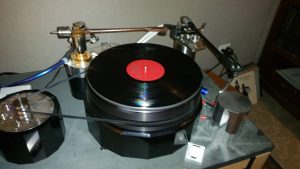
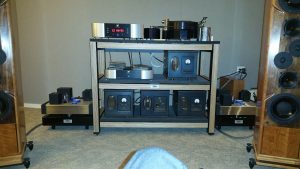 I picked some great recordings of Mark which I will add below
I picked some great recordings of Mark which I will add below
When I came back, I asked Mike to again play some Zep, we played one ACDC and Clapton live Cocaine, and then closed it off as I went to bed for the flight back next morning.
Mike’s lower noise floor is achieved by a sum of the Equitech and the Tripoint (which he credits to making a big difference), and the Entreq (which is more subtle), plus the lower noise floor achieved by the Dartzeel and the Analog. The Tara cables and interconnects (which also allow for grounding) add further to the lowering of the noise floor.
His system is transparent, and many people who have tried to achieve a transparent system have achieved a sterile one. But not here. Every recording sounded so different, with the musicality flowing through. When we played classical, the system was natural. When we played rock, it was grungy. When we played amplified hifi show audiophile recordings, it sounded like a hifi show room. It just transformed.
His midrange is transparent like panels, and while the soundstage is big the vocals are perfectly sized, If you move your angle on the revolving chair, you will see images moving to either side by the same angle with which you move. Yet is enjoyable all through the room. If there is one drawback, it is when you sit so close to them, the visual image makes them look overwhelmingly close, and I had to shut my eyes through the listening session to enjoy the actual soundstage. Towards the second day I could keep my eyes open without the proximity of 4 towers influencing my listening perception
But guys, don’t try this at home. Many people who have tried this path, have failed. To be this good, you have to go all out. Room, components, the works. Mike will tell you his system sound has not been good at many times too. What Mike is very good at, is if he realizes something in his system is missing and it needs to sound a certain way, he will leave no stone unturned to get it. If you are a sonic attribute he needs, then like Liam Neeson, he has a special set of skills and he will find you.
Mike’s room is the best there is that I know of, but trying to pick a component is not an easy choice. You can choose between Anna and GFS based on a listening session, and compare how the Lampi fares to the analog. But beyond that, everything is so well bonded together that it is tough to break it down. The room plays an extremely important part, of course, which is why the Durand arm and the NVS designers used this room for testing and development. With the MM7, one gets: deep bass extension, -3db at 7hz, -6db at 3hz, 4 powered 15″ subwoofers and 4 11″ woofers per side combined with an easy load of 96db at 6 ohms, ribbon and ceramic drivers. So if anyone chooses to look at MM3, take a listen (I certainly will), in another room which is not as good.
Mike is a fantastic and generous host, and loves hosting. Think about his eye for detail. He has a special seat, made by NASA for astronauts for take off, which is a recliner but lets you distribute your weight across your back and legs, so that you can sit for long hours. He listens 5 hours daily on this seat. But then for guests, he has a revolving chair so that the guest can sit as well as turn around to talk to Mike and/or other guests in other parts of the room.
Next steps will be to isolate components. Listen to MM3, compare the Darts with some other component. For those asking, I don’t like to comment on components without ABing, so there is not a lot I can say about the Darts. Would his system have sounded faster with Spectral in? Yes, Marty’s is the still the fastest, slammiest, with infinite rise. Vitus, valves, SETs, would have all changed the sound. As would have a Thorens Ref or a Techdas. Were any of these required? No. The system was doing everything, and would have sounded different, possibly better, possibly not. It was way ahead of the rest. Seriously. The only negative I can think of is that Mike stocks no tea or coffee, so you need to drive up to the nearest Starbucks for one. Bruce B does not stock it either, and Jazdoc can offer you a coffee only if his wife is around.
Brain dumps of the digital playlist at Mike’s
Shostakovich 7 Decca rip
Rachel pocher channel classics Mozart sonata for violin and piano
Rodrigo vivaldi guitar concerto track 11
Liszt rhapsody 1 Decca LSO
Kunzel
Telarc Russian nights kunzel Cincinnati pops
Hillary Hahn Bach violin concertos
Purity because I have given too much – quad DSD
Dialoghi cello rip from tape
Guitar solo
Penderecki string trio janaki string trio quad dsd tape rip which he also has on 45
Wave kinetics debussy ilia itan quad dsd native also exists in tape
Other recordings from Jazdoc
Also note Mike’s art outside the room – it’s beautiful, and not expensive





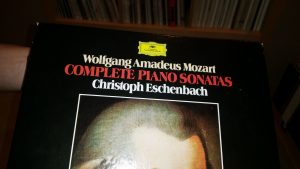
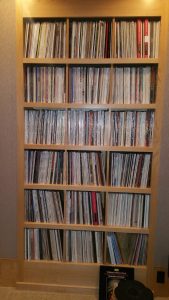

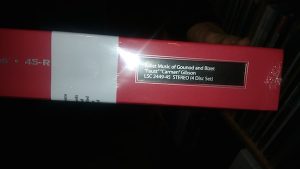
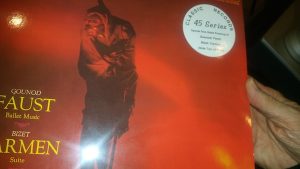
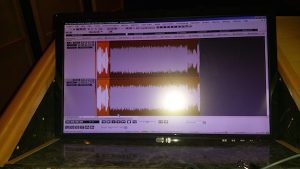

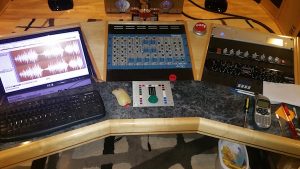






Kedar,
it was great to meet you and I truly enjoyed listening with you. your passion for our hobby is very evident as is your love of and knowledge about music. your travels and comments are valued and eagerly anticipated. I am humbled by your generous comments about my system and thank you for that.
best wishes to you on the launch of this blog and I expect it to be well visited and frequently referenced in the time to come.
kindest regards,
‘no coffee’ Mike Lavigne
Kedar,
I also enjoyed our listening sessions. Meeting new people and hearing new music is one of my favorite parts of the hobby. Thank you for the kind words about my system. Just a few minor points of clarification:
a. My turntable is a Galibier Stelvio; http://galibierdesign.com/.
b. My amplifiers are Found-Music Blades which use EL34/6CA7’s as the power tubes; http://found-music.com/
Further system details can be found at: https://systems.audiogon.com/systems/743
Good luck in you quest.
Mark Zobel aka ‘Jazdoc’
Ked,
I think you are truly the Anthony Bourdain of the audiophile world. Great write up. Nothing like starting your reporting at the top of the food chain at Mike’s place as a reference for all future travels.
Marty
Thank you Kedar for this splendid report and congratulations Mike! I must admit, that I expected nothing else. I have followed Mike on various sites for many years and came to respect the astuteness of his approach and most of all his passion and love for music.
Thanks to your efforts Ked, my expectations have proved to be real.
Kudos to you both.